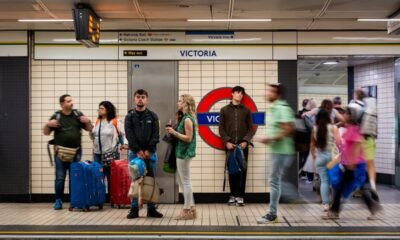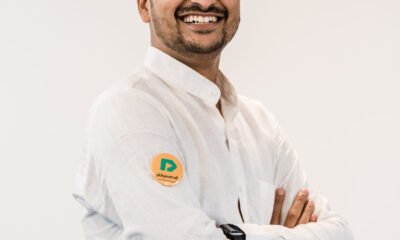Travel Guides & Articles
India Commits To Affordable Rail Travel By Introducing Seventeen Thousand New Non-AC Coaches For General And Sleeper Classes

Thursday, July 31, 2025
India has unveiled an ambitious programme that will see an addition of seventeen thousand general and sleeper coaches, that are non-AC, to its trains all over the country in the next five years, in a bid to greatly improve and expand cheap rail travel. The move is a result of a higher demand from price-sensitive passengers demanding more general class capacity and increased comfort. The augmentation would provide for travel at low costs to millions of people (particularly those belonging to weaker sections economically) and meet the growing demand on the rail system.
Indian Railways has announced an ambitious plan to add 17,000 additional non-AC general and sleeper coaches within the next five years. This initiative marks a significant step toward enhancing the affordability and accessibility of train travel for budget-conscious passengers across the country. The move is part of a broader effort by the government to increase capacity and improve comfort for general class travelers, responding to the growing demand for affordable rail travel options.
Currently, non-AC coaches make up around 70% of the total passenger coaches in Indian Railways. This indicates a clear shift towards meeting the needs of general class passengers, who represent a significant portion of the rail network’s users. Non-AC coaches now offer 54 lakh seats, which accounts for 78% of the total seating capacity in the network, while AC coaches constitute the remaining 22%. This expansion of non-AC facilities reflects a conscious effort to prioritize the needs of the majority of passengers, particularly those in lower-income groups who rely on general class travel for their daily commute.
As part of the government’s focus on expanding general class services, 1,250 non-AC general coaches are already in use on long-distance trains during the 2024-25 financial year. This marks a critical step in the ongoing effort to make train travel more affordable for economically disadvantaged and middle-class sections of society. Indian Railways is particularly focused on providing low-cost travel options through Mail, Express, and regular passenger trains, which are essential for those who cannot afford the higher fares associated with AC travel.
In line with this commitment, Indian Railways has launched services like the non-AC Amrit Bharat Express and Namo Bharat Rapid Rail. These trains offer high-quality travel experiences to a larger segment of the population, with an emphasis on improving the comfort and convenience of non-AC passengers. Such services aim to make affordable travel not only accessible but also enjoyable for the masses, particularly those in the lower-income brackets.
The introduction of these new services is accompanied by a revised policy regarding train composition. This policy aims to allocate a greater number of coaches for general and sleeper non-AC classes, providing more seating capacity for non-AC passengers. For example, in a typical 22-coach Mail/Express train, 12 coaches are now dedicated to General and Sleeper non-AC classes, while only 8 coaches are allocated to AC classes. This revised composition ensures that a larger proportion of the train’s seating capacity is available to non-AC travelers, further enhancing their travel options.
In addition to the changes in train composition, Indian Railways continues to operate non-AC unreserved trains, such as MEMU, EMU, and passenger trains. These trains, along with unreserved coaches in Mail/Express trains, cater to passengers who prefer or need to travel without a reservation. This is especially important for daily commuters and travelers who do not have the luxury of booking tickets in advance. By offering unreserved travel options, Indian Railways ensures that passengers from all walks of life have access to affordable transportation.
Passenger numbers on general and unreserved coaches have been steadily increasing. In the 2022-23 financial year, Indian Railways recorded 553 crore passengers traveling in general and unreserved coaches. This number rose to 609 crore in 2023-24 and is expected to reach 651 crore in 2024-25. This growing demand for general class travel underscores the importance of expanding non-AC services and ensuring that train travel remains a viable option for millions of people.
To meet this demand, Indian Railways has also unveiled plans to expand the fleet of Amrit Bharat trains. The railway network intends to manufacture 100 additional Amrit Bharat trains, which will further boost non-AC services. These trains are designed to cater to the needs of general class passengers by offering a modern and comfortable travel experience. Typically, each Amrit Bharat train includes 11 General Class coaches, 8 Sleeper coaches, 1 Pantry Car, and 2 Guard Vans. The trains are also equipped with facilities for differently-abled passengers, ensuring inclusivity and accessibility for all travelers.
The introduction of these new trains is part of Indian Railways’ broader vision to make train travel more inclusive, accessible, and comfortable for people from all economic backgrounds. The expansion of non-AC services demonstrates a clear commitment to providing affordable and high-quality travel options for India’s economically weaker sections. It also highlights the government’s focus on improving the overall experience of general class travelers, who make up the majority of the rail network’s passengers.
India plans to add seventeen thousand non-AC general and sleeper coaches over the next five years to meet the growing demand for affordable rail travel. This expansion aims to provide increased capacity and comfort for budget-conscious passengers across the country.
To sum it all up, Indian Railways’ venture into 17,000 new non-AC coaches in the next five year will be a game-changer for cheap travel in India. The government wants to make rail travel more convenient and widen the base of the passengers by increasing the number of seats, improving the train composition and starting services like Amrit Bharat Express and Namo Bharat Rapid Rail from the existing Rail network. With more and more people travelling in general class and the demand for cheap seats increasing, the need is only highlighted. The largest system of its kind in the world, Indian Railway is driving its way forward with the motto of providing high-speed and high-tech trains for everyone.
Travel Guides & Articles
Rajasthan’s Latest Strategy to Boost Desert and Tribal Tourism, How New Circuits Are Redefining India’s Travel Landscape – Travel And Tour World
Travel Guides & Articles
Travel agent duped of 1.95 cr by fellow agent | Vadodara News

Vadodara: A Vadodara-based travel agent filed a complaint with the cybercrime police on Saturday after allegedly being cheated of Rs 1.95 crore by another agent.The complainant, Kavita Rachh, who runs a travel agency in the city with her brother, said she was initially approached by representatives of a travel company promising holiday packages that she could sell to clients with added commission.Rachh alleged that her first booking, worth Rs 7.34 lakh, was completed without issues. She later booked packages worth Rs 1.95 crore, including tours to Dubai and Vietnam. However, some clients scheduled to fly to Dubai on Aug 8 discovered their bookings did not exist. In other cases, bookings were partially cancelled or included only flights and hotels, with other arrangements missing.After discovering the discrepancies, Rachh lodged a formal complaint.
Travel Guides & Articles
Travel Meerut To Prayagraj In JUST 6 Hours News24 –

The work of the Ganga Expressway, being constructed from Meerut to Prayagraj is now moving towards completion. Especially in the Hasanpur tehsil of the Amroha district, this expressway has been completely completed. Now, only the final work is going on, which is almost complete. It is expected that vehicles will start running on this route in the coming month.
The construction of a 23.60 km-long expressway in the Hasanpur area is planned to be completed by 12 October 2025, although road construction and lighting work have already been completed here. The work of laying a pipeline for drainage of rainwater has also been completed.
An overbridge and T-point have been prepared on the Hasanpur-Rahra road in Mangrola. Four toll plazas have also been built on both sides of this T-point. Apart from this, the construction of the bridge over the Ganga River in Pandapur has also been completed.
Officials say that some finishing work was stopped due to rain, which will be completed within the next one month. At the same time, sources say that the 594 km-long Ganga Expressway extending from Meerut to Prayagraj will be opened in the month of November, as reported by Jagran.
With the opening of the expressway, it will become very easy to cover the distance from Meerut to Prayagraj. People of Amroha will also get convenience in traveling to both the cities. This route will prove to be very useful for the devotees coming to the Tigri fair from Prayagraj and nearby districts. Also, devotees of Meerut, Hapur and Amroha will now be able to reach Sangam bath easily.
Apart from this, lawyers and litigants of western Uttar Pradesh will get great relief in reaching the Prayagraj High Court. They will be able to leave their home in the morning and return the same day after pleading their case in Prayagraj, as per media reports.
-

 Business2 weeks ago
Business2 weeks agoThe Guardian view on Trump and the Fed: independence is no substitute for accountability | Editorial
-
Tools & Platforms1 month ago
Building Trust in Military AI Starts with Opening the Black Box – War on the Rocks
-

 Ethics & Policy2 months ago
Ethics & Policy2 months agoSDAIA Supports Saudi Arabia’s Leadership in Shaping Global AI Ethics, Policy, and Research – وكالة الأنباء السعودية
-

 Events & Conferences4 months ago
Events & Conferences4 months agoJourney to 1000 models: Scaling Instagram’s recommendation system
-

 Jobs & Careers2 months ago
Jobs & Careers2 months agoMumbai-based Perplexity Alternative Has 60k+ Users Without Funding
-

 Podcasts & Talks2 months ago
Podcasts & Talks2 months agoHappy 4th of July! 🎆 Made with Veo 3 in Gemini
-

 Education2 months ago
Education2 months agoMacron says UK and France have duty to tackle illegal migration ‘with humanity, solidarity and firmness’ – UK politics live | Politics
-

 Education2 months ago
Education2 months agoVEX Robotics launches AI-powered classroom robotics system
-

 Podcasts & Talks2 months ago
Podcasts & Talks2 months agoOpenAI 🤝 @teamganassi
-

 Funding & Business3 months ago
Funding & Business3 months agoKayak and Expedia race to build AI travel agents that turn social posts into itineraries






















